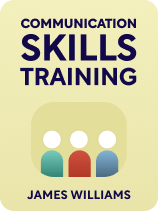

This article is an excerpt from the Shortform book guide to "Communication Skills Training" by James Williams. Shortform has the world's best summaries and analyses of books you should be reading.
Like this article? Sign up for a free trial here.
Does “That’s not what I said” sound familiar? How often do you say it or hear it?
No matter how careful you are with expressing yourself and listening to others, misunderstandings are bound to happen. Extend some grace to yourself and others, and develop a few skills that can help clear things up and smooth things over.
Continue reading to learn how to resolve misunderstandings in communication.
Misunderstandings in Communication
While being clear and accurate in your communication reduces the chances for misunderstandings, Williams explains that they still might happen. As such, it’s crucial to understand how to manage them so you can get the conversation back on track. Williams offers some advice on how to resolve misunderstandings in communication and salvage both the conversation and the relationship.
Tip #1: Pause and Identify the Issue
When you realize a misunderstanding occurred, Williams says to pause the conversation and address it immediately. Take a moment to figure out what exactly was said or done to cause the issue so you know what to address.
(Shortform note: In Crucial Accountability, the authors reiterate the importance of addressing urgent issues like misunderstandings as soon as they arise to ensure that you fulfill the original goal of the conversation. To solve these issues without derailing things, they recommend clearly bookmarking the conversation and acknowledging that you’re going to pivot to a new issue. For example, you might say, “Let’s continue the discussion of X later. Right now, I want to address the misunderstanding that just occurred.”)
Tip #2: Be Mindful
When someone gets offended, Williams says you must be mindful of your emotions and keep your cool. Fully consider their perspective on what you might have done wrong—this will help you see how you might need to change your behavior. Then, take accountability for any mistakes or contributions you made to the issue or misunderstanding.
(Shortform note: The authors of Crucial Accountability reiterate to be mindful of your emotions, actions, and impact when someone gets offended. To take accountability for the situation and get the conversation back on track, they recommend the following process: First, state the other person’s misunderstanding. Then, explain that it wasn’t your intention to convey something hurtful. Finally, clarify your intent. For example, you might say, “I’m sorry, I didn’t mean to blame you for the incident. I don’t think it was your fault. My intention is just to discuss what we can both do to prevent something similar from happening again.” This will show the other person your positive intent and re-establish mutual understanding and respect.)
Tip #3: Don’t Involve Outside Parties
Williams explains that involving third parties in a misunderstanding complicates the issue and makes further miscommunications more likely. Outsiders are unlikely to have a complete and accurate perspective and background on the situation being discussed.
(Shortform note: Involving a third party in a dispute may sometimes be beneficial: For instance, utilizing a professional mediator might enhance your ability to solve difficult problems and achieve lasting change. True mediators are impartial and encourage dialogue that will enhance everyone’s understanding of the situation, rather than push for a certain outcome.)

———End of Preview———
Like what you just read? Read the rest of the world's best book summary and analysis of James Williams's "Communication Skills Training" at Shortform.
Here's what you'll find in our full Communication Skills Training summary:
- Why effective communication is one of the most important skills to have
- How to develop your communication skills through intentional practice
- Why emotional control is central to expressing yourself effectively






